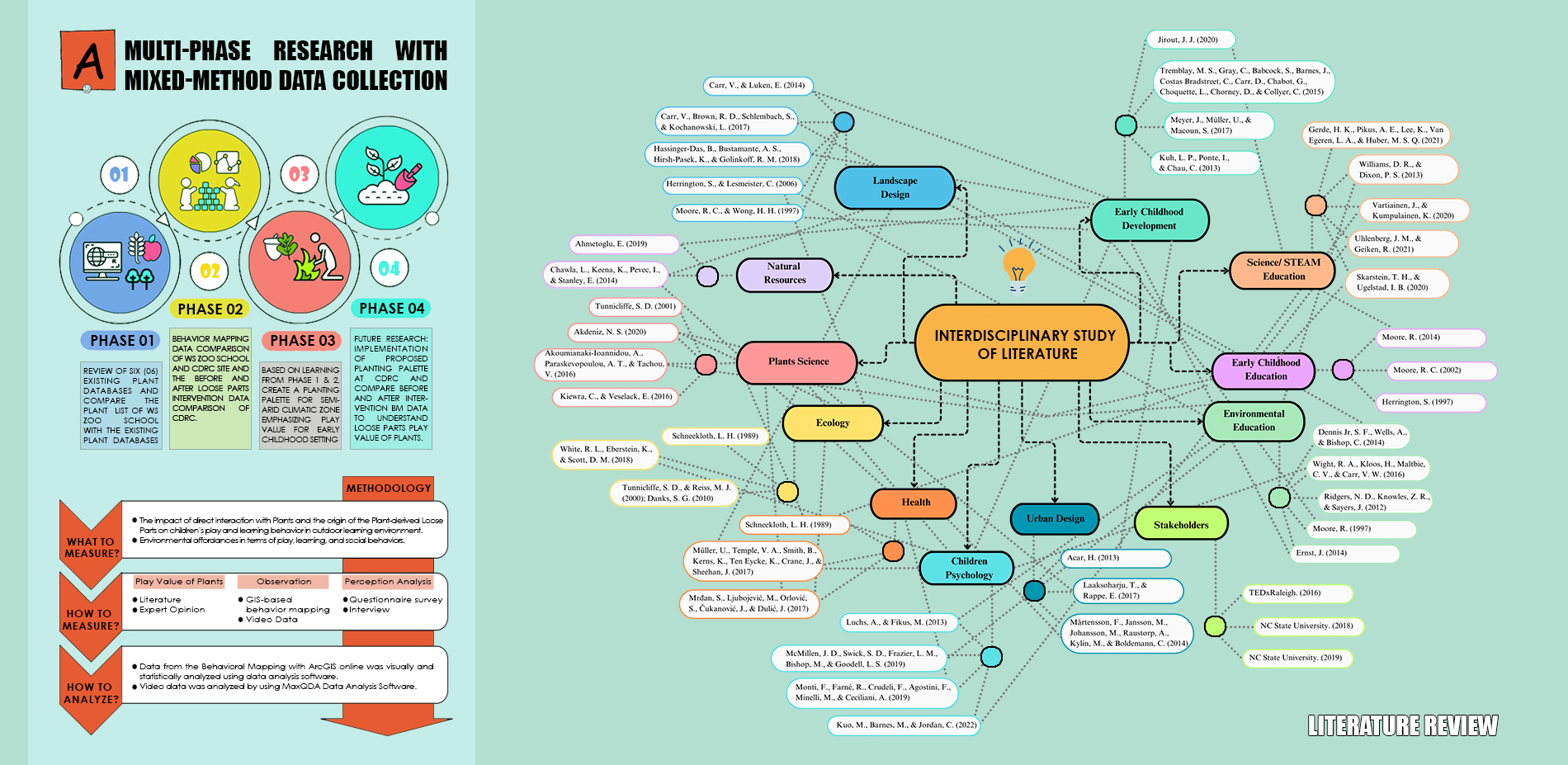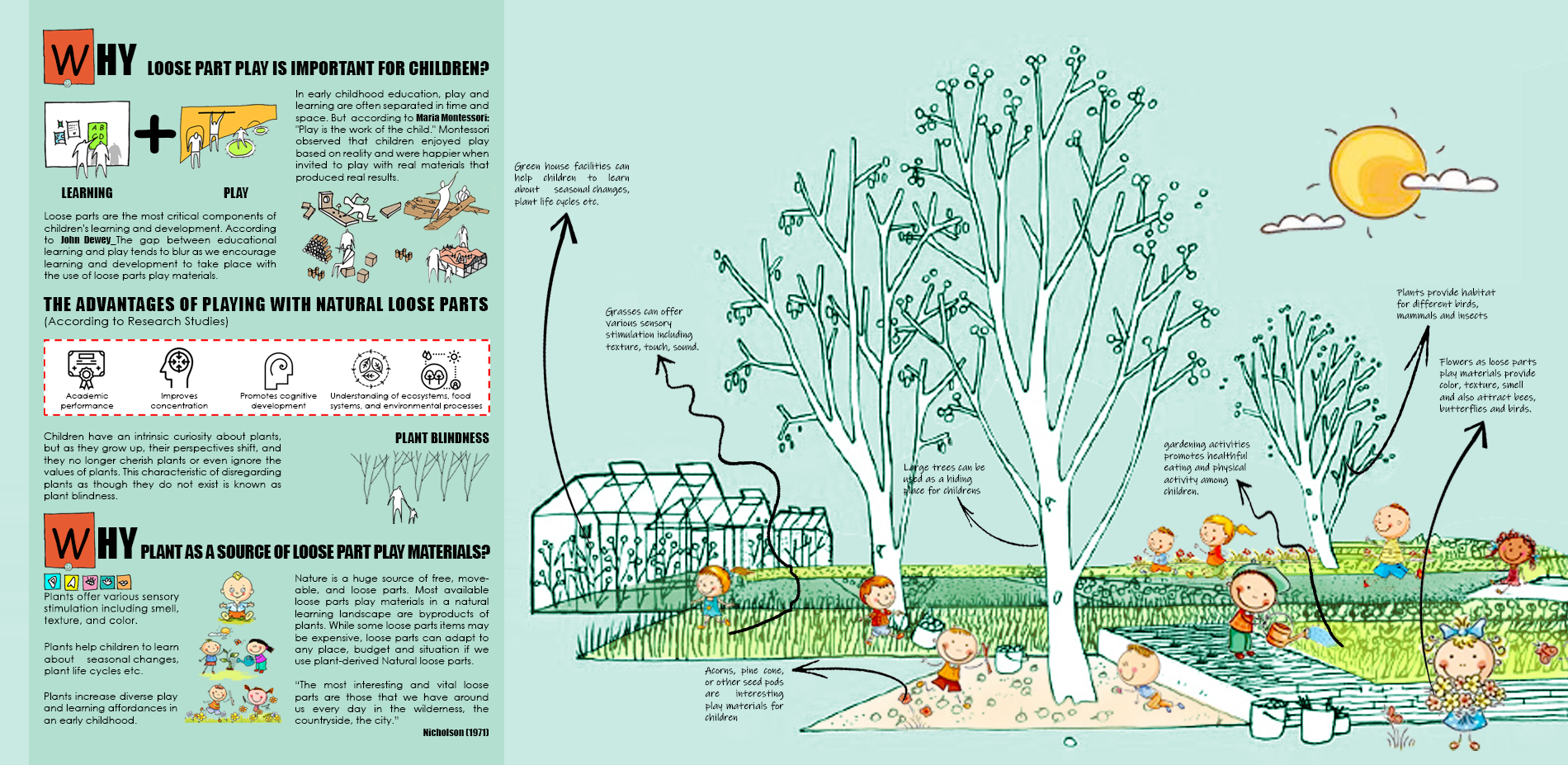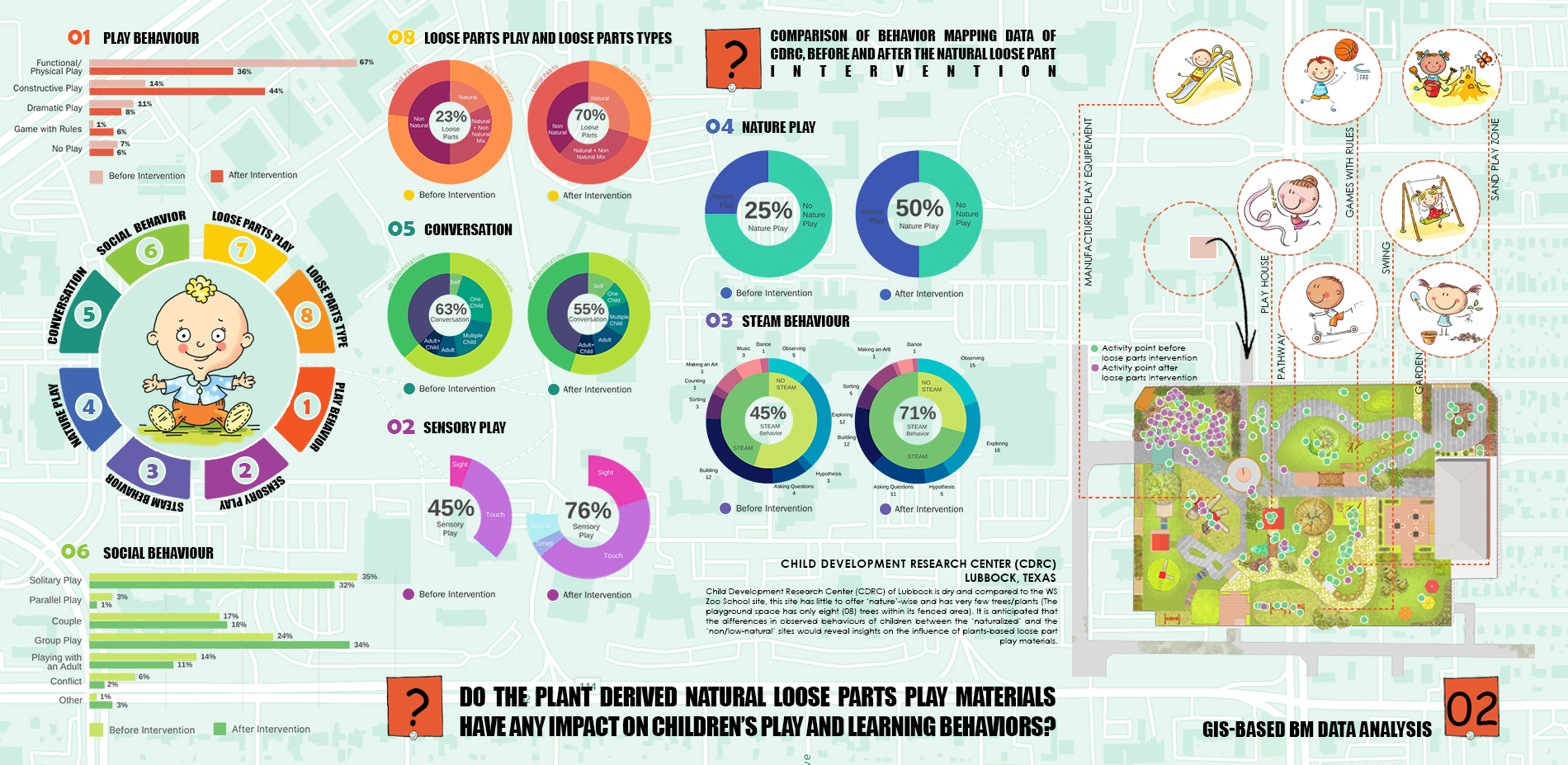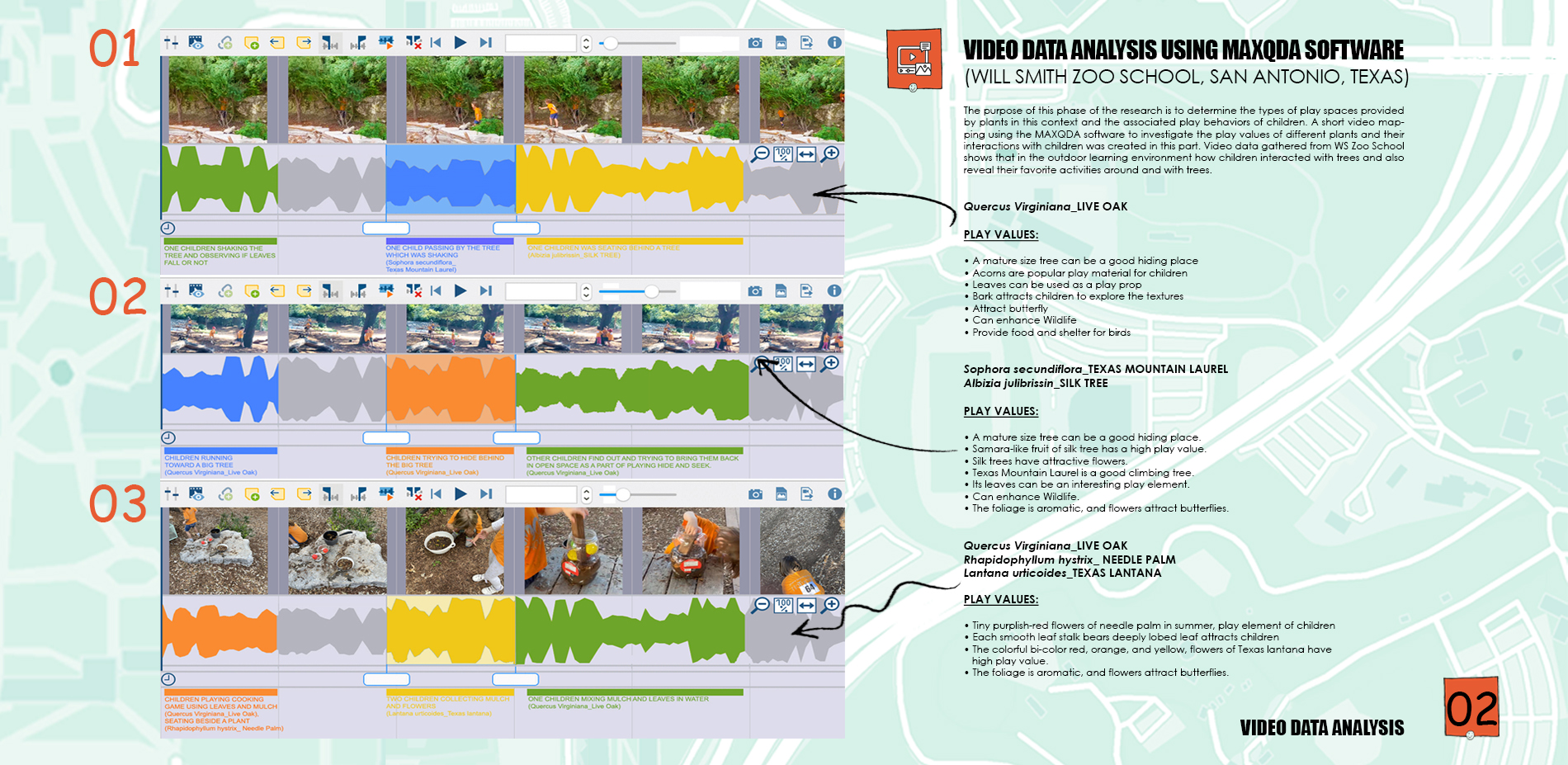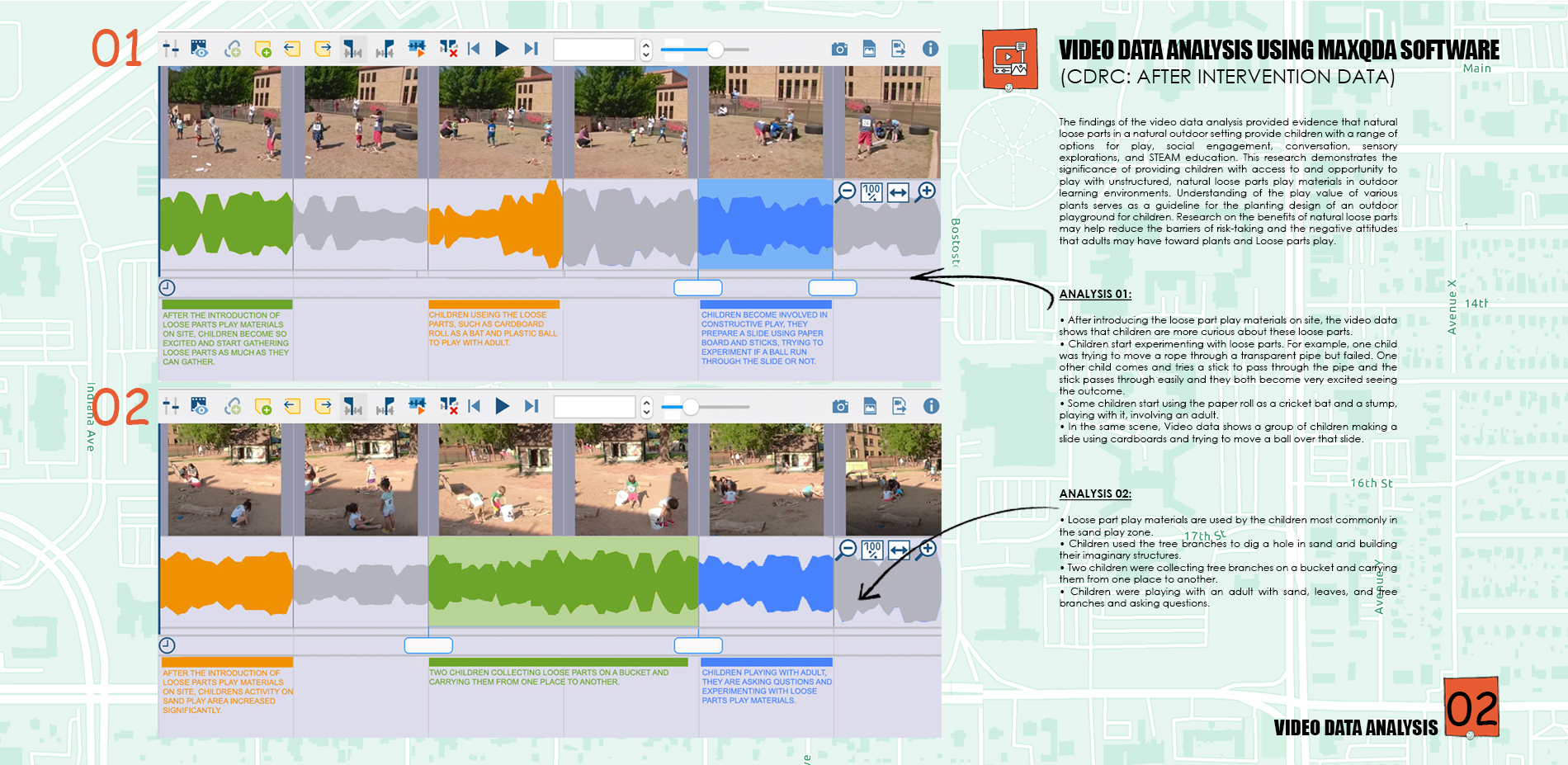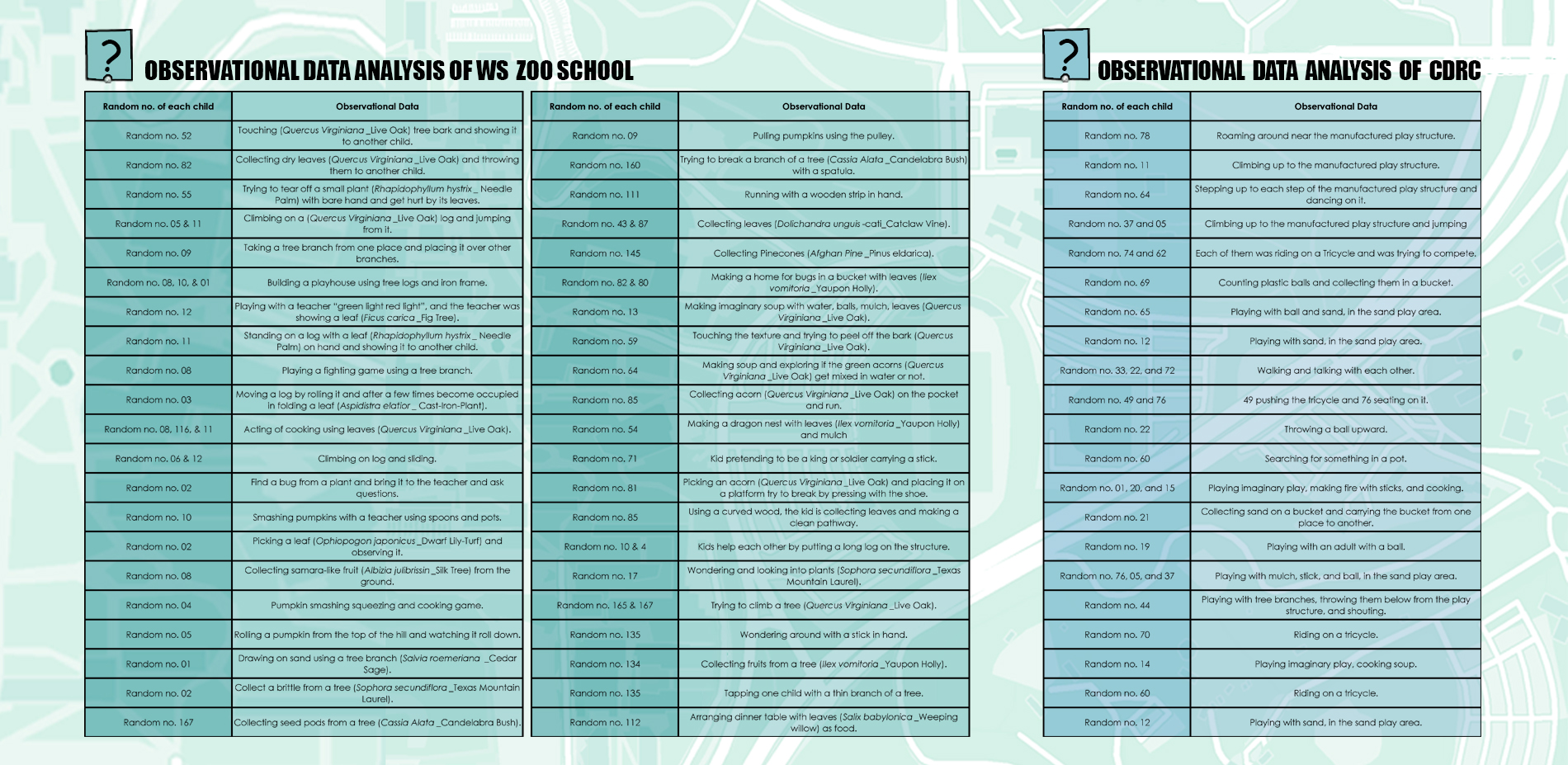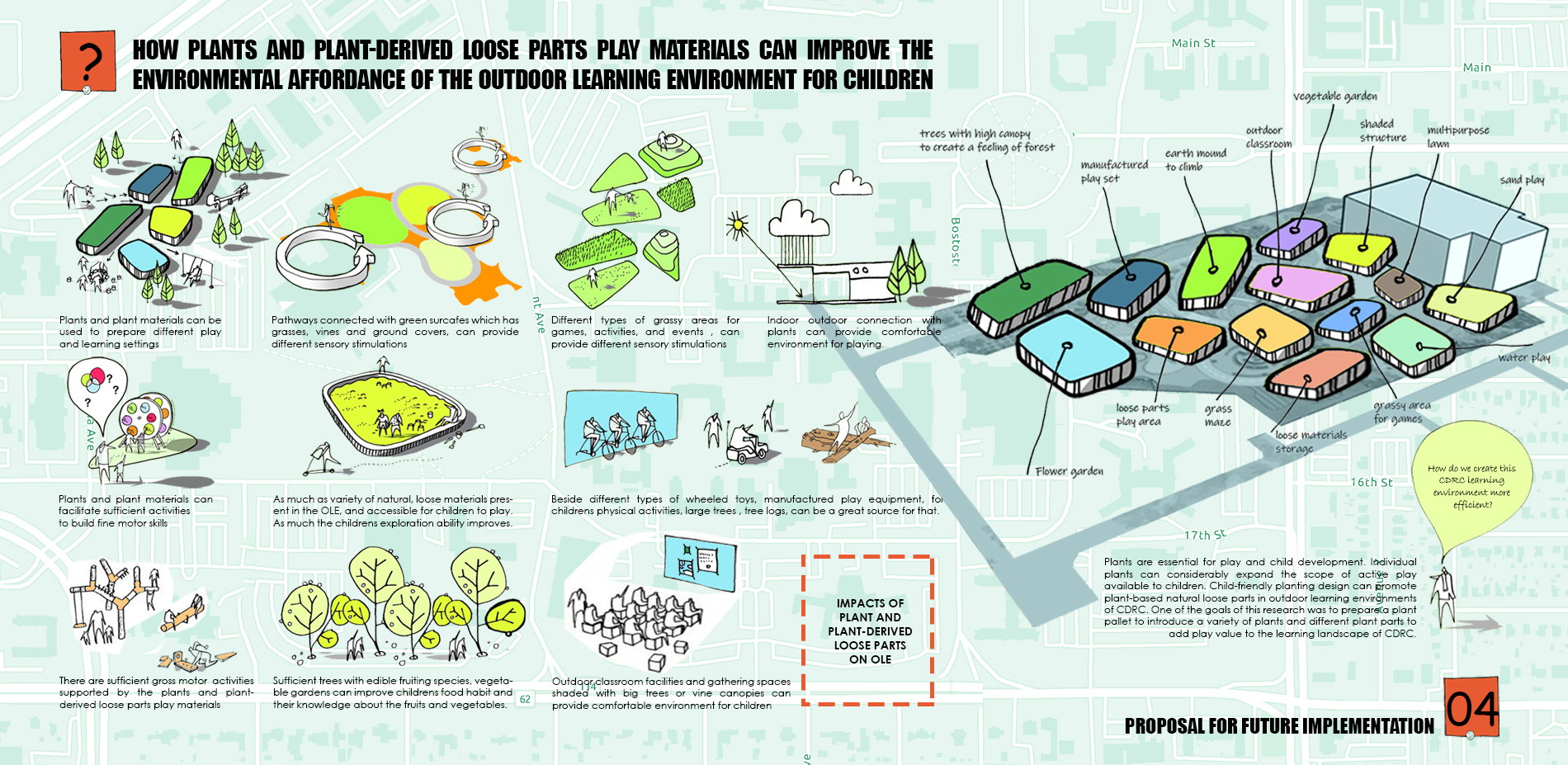The Play Value of Plants
Award of Excellence
Research
Lubbock, Texas, United States
Nazia Afrin Trina, Student ASLA;
Faculty Advisors:
Muntazar Monsur;
Texas Tech University
This research asked a clear question, produced results, and packaged the information creatively and in the spirit of the research partners. This is such a cool idea! Would be incredibly useful for LAs, schools, municipalities, students, and parents. An important and unique addition to a growing interest in nature-based learning and play.
- 2023 Awards Jury
Project Statement
Plants have the potential to support all domains of early childhood development when carefully selected. This research exclusively focuses on the loose parts play value of plant parts in early childhood play and learning environments. Statistics regarding childcare centers in the USA show that the number of children who go to preschool every day is more than 11 million. Since the majority of preschoolers in the USA spend a large portion of their lives in childcare facilities, if different plants with play values can be introduced in the outdoor play areas of these childcare centers, then it can be a potential opportunity to promote the interaction of children with nature-based loose parts and enhance their play and learning behavior.
Project Narrative
Research Objectives:
To identify the plants which are child-friendly and can be reshaped to be introduced as loose part play materials and examine existing plant databases.
Analyze children’s behavioral data to understand how plant-based loose parts are used by children in a ‘real-world’ setting.
Developing a Child-friendly Plant pallet for the semi-arid climatic zone and a preliminary plant design idea for a playground so that these plants can be used as a source of loose parts play materials for children's outdoor play.
Research Methods:
The Research was conducted in three phases. A Combined Research Design was adopted with a combination of Database, Experimental, and Case Study Research. The data collection followed mixed-method (qualitative and quantitative) techniques. In the first phase, six existing plant databases were examined thoroughly to investigate whether they offer any data on the play value of plants for children. For the second phase of the research, we visited site 01 (naturalized site) to collect data on children’s interactions with plants and plant parts in a natural learning environment. Finally, a cross-examination was done to find out if all the plant resources found in site 01 were present in the existing databases and which are their play values. Finally, collected data from site 01 was compared with a low-naturalized childcare center (site 02). In the Third Phase, a planting palette for a semi-arid climate zone has been developed based on literature, database analyses (Phase 1), and empirical data (Phases 1 and 2). A future fourth phase will finalize and implement the planting design in Site 02 in 2023-24.
Result and Discussion:
The findings of phase one show that major existing plant databases do not specify or discuss plants with play values. Only two databases have a search option for plants with play values and those that are child friendly. Moreover, from case study site 01, a list of 48 plants was identified and compiled, and after cross-referencing them with the databases with play values, we found only 27 plants present in them.
The findings of phase two provided evidence that natural loose parts in an outdoor setting have impacts on children's play and learning behavior. In site 01, various open-ended loose parts were used by the kids. This facilitated problem-solving, ingenuity, and creativity in ways that would not have likely occurred on a conventional playground like Site 02. Similarly, in site 02, before-loose-part intervention data shows children are more involved in functional/physical play, whereas the after-loose-part intervention data show an observable improvement in STEAM learning behavior such as; Observing, Exploring, Hypothesis/ Cause & Effect, Asking Questions, Building, Sorting, Counting, etc.
Conclusion:
By observing children engaged in free play in different settings, this research provides many clues to support the ‘messy’ design concept of a play environment. Plants have the potential to support all domains of early childhood development and that can be more effective if we use plant parts as loose part materials. This research identified the lack of a comprehensive plant database focused on early childhood play and learning. Also, empirical data on children’s interactions with plants and plant parts in the real world showed that there are much to be added to the literature and existing databases about the play value of plant parts in early childhood learning landscapes.
Plant List:
- PECAN
- HONEY LOCUST
- BUR OAK
- CHINESE PISTACHE
- SWITCHGRASS
- GOLDEN RAIN TREE
- YAUPON HOLLY
- NORTHERN CATALPA
- YARROW
- SUNFLOWERS
- COMMON DAISY
- TURKS CAP
- LAVENDER
- FEATHER GRASS
- JAPANESE PAGODA TREE
- CRAPE MYRTLE
- SQUASH
- TOMATO
- BELL PEPPER
- CRAB APPLE


